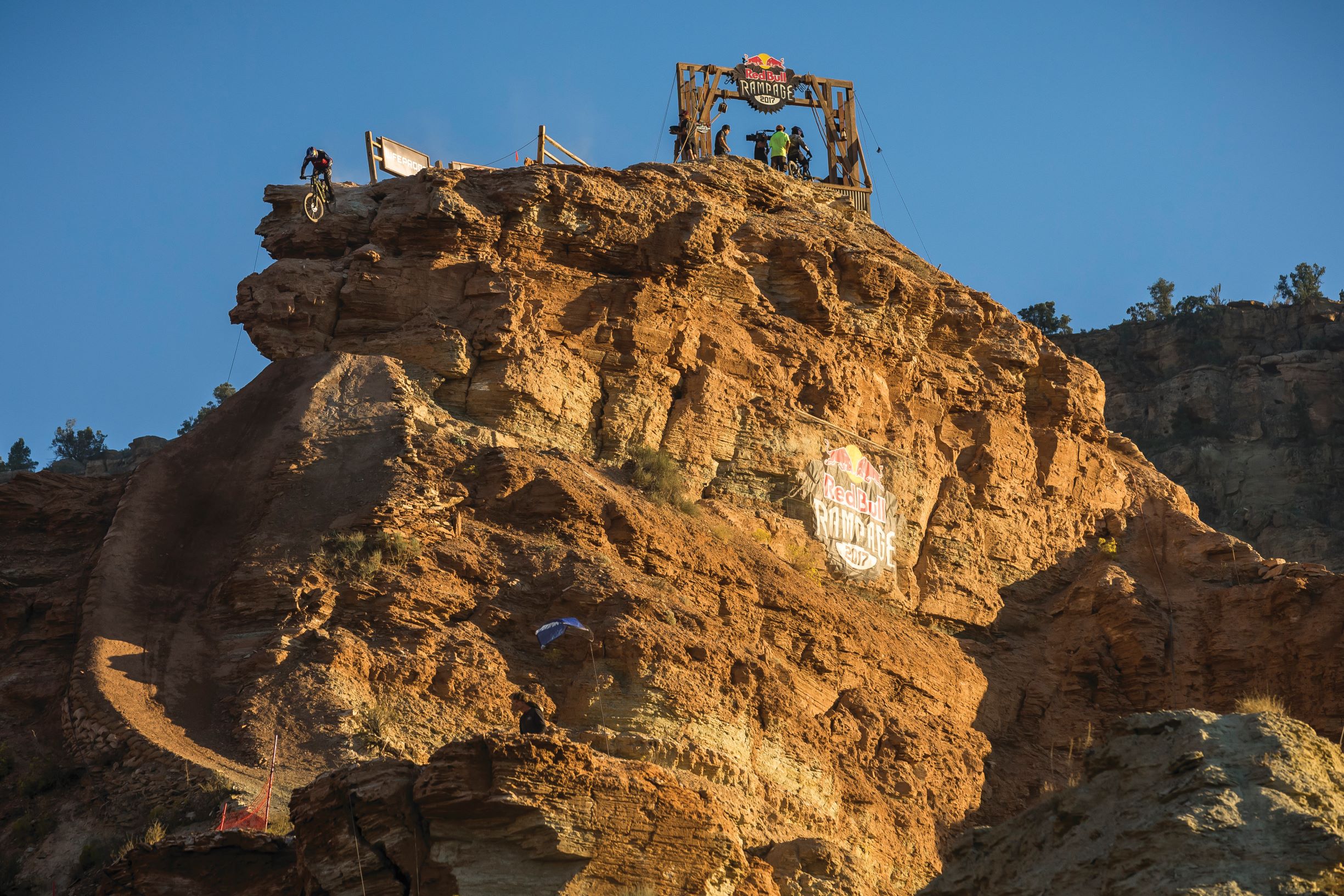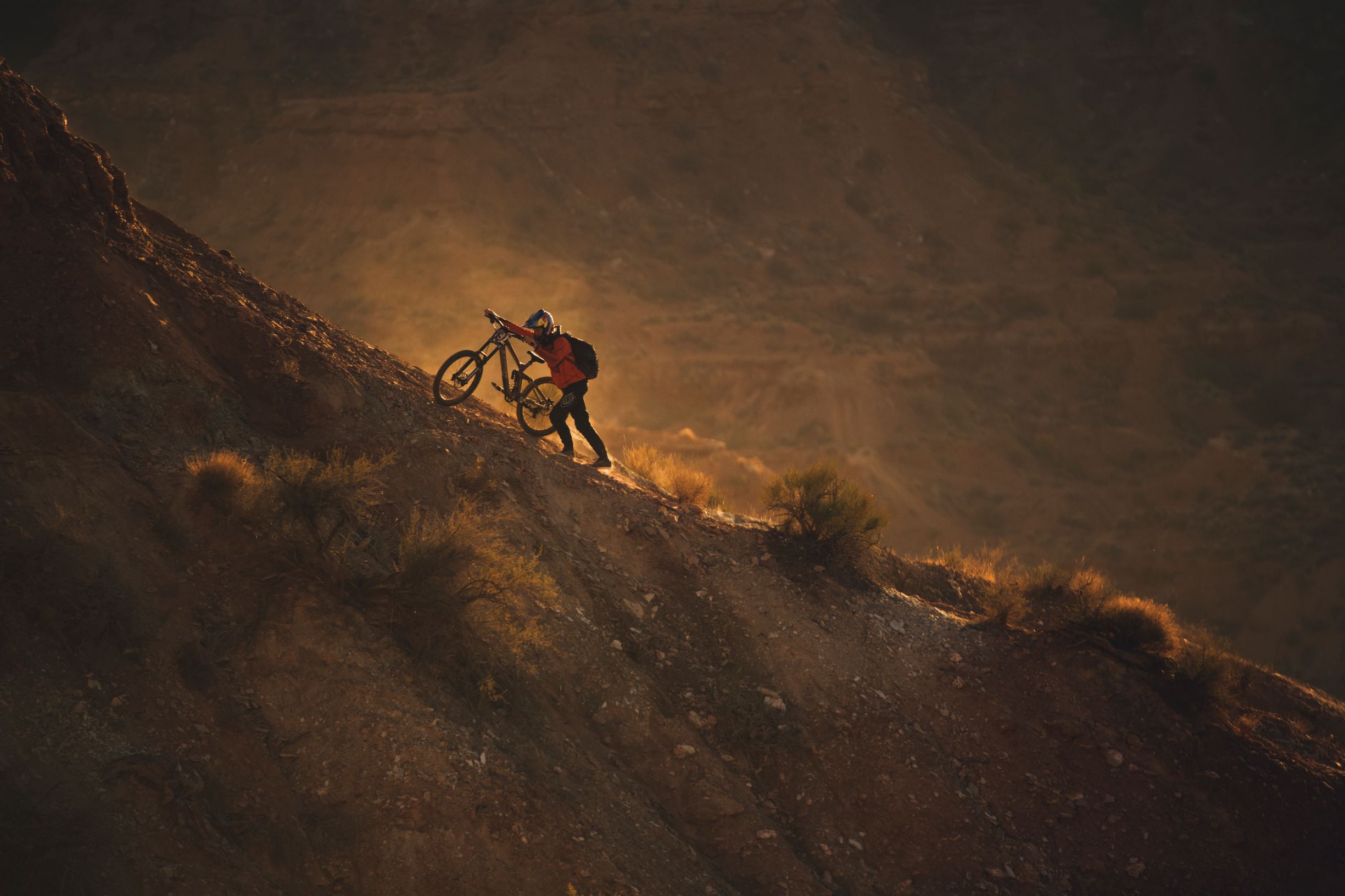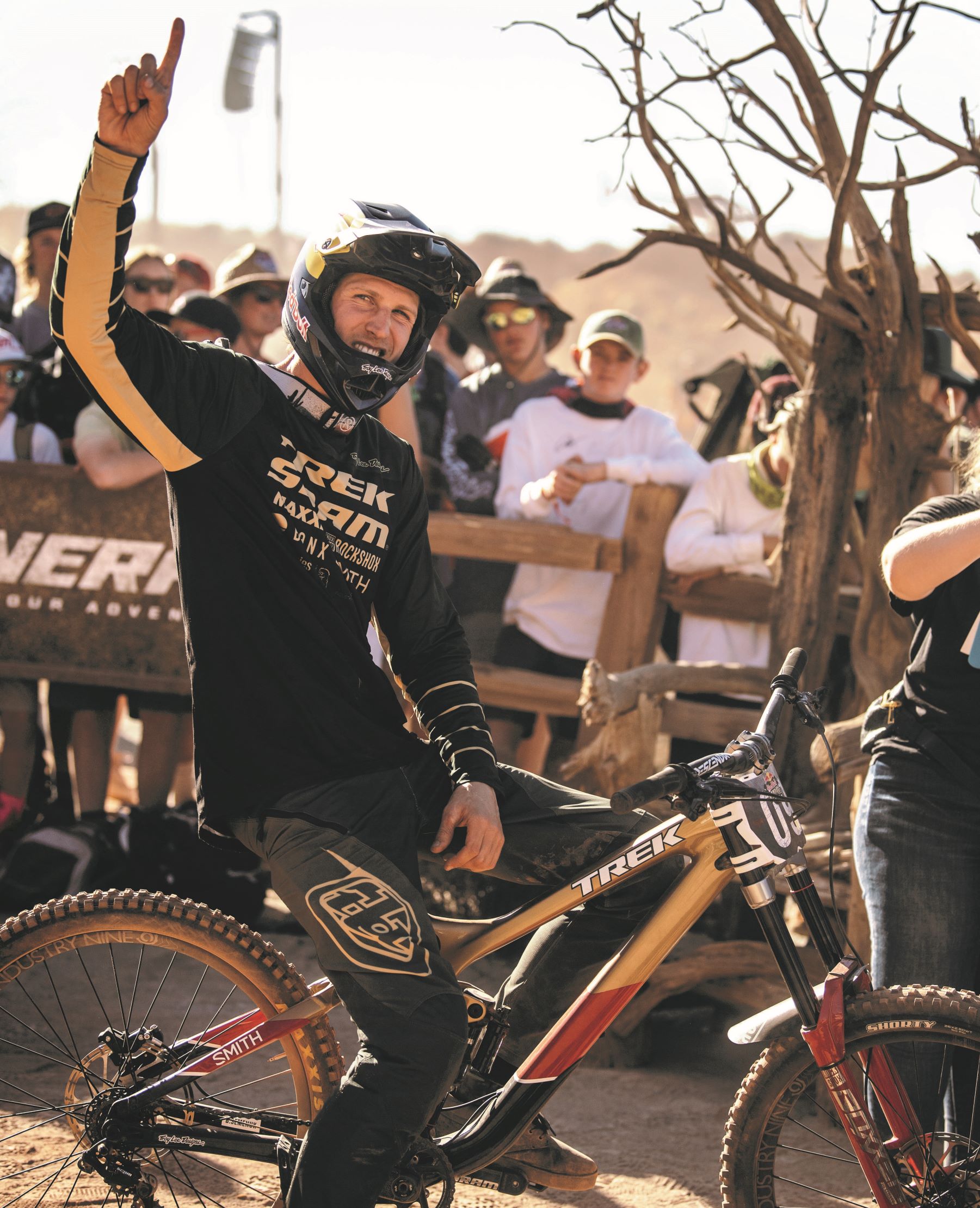How Brandon Semenuk Became One of the World’s Best Mountain Bikers
The decorated athlete recently rode his third championship-winning run at the annual Red Bull Rampage freeride event.

As Brandon Semenuk dropped into his contest-winning run at this past October’s Red Bull Rampage mountain biking event, those unfamiliar with the sport might view it as a reckless, if not suicidal, endeavor. After all, the steep and treacherous mountainside he was about to attack would not look out of place covered in climbers, hooked into safety ropes, trying to ascend the same route he was about to descend.
But for Brandon, and his fellow competitors, Rampage represents the pinnacle of the freeride mountain biking competitive calendar. As Semenuk tore down the rock face, launching backflips off of jumps and 360s over gaps in the rock, what should seemingly be an act of pure survival took on the rhythm and poetry of a choreographed routine, albeit one that some would consider death-defying. Completing his run flawlessly and with a heavy dose of style, Semenuk had secured his third victory at Rampage, cementing his reputation as one of the world’s best freeride mountain bikers.
Semenuk’s coronation at the top of his sport was decades in the making. “I grew up in Whistler, British Columbia, which is sort of a mecca for mountain biking,” explains the 29-year old Canadian. “When I was growing up it was a great place to ride…there were these crazy circuits of mountain biking trails just all over the place. So it was pretty accessible to me.”
Following in his older brother’s footsteps, Semenuk began in cross country racing before discovering other mountain bike disciplines. He recalls that, “After racing a bit, it developed into just trying some other avenues, having opportunities to do other contests and travel for riding. I just fell into this freeride category and that’s what I fell in love with.”
Freeriding is just one category within the mountain biking world. Another discipline, slopestyle, typically focuses on the most extreme tricks riders can perform on a predetermined course. “Slopestyle is more manicured features,” explains Semenuk. “It’s very trick-based and you’re judged mainly on tricks and less on your line, because typically a lot of the events only have one line.”

The greater challenge, and source of excitement, for Semenuk and his peers is the annual Red Bull Rampage event. Instead of all riders taking the same path down a manicured route, competitors arrive a week or more ahead of the competition to scout the rock face and design their own unique line to the bottom. Competitors are allowed to build, alter and dig out trails and features to enhance their run. “I would call it the most core freeride event,” says Semenuk. “Because you build your own line, you look at the hill your own way and every rider has a different line. It’s not just tricks, but how you ride the line, how fast and fluid you ride the line. Trick selection, line selection…it’s a broader range of what’s considered by the judges.”
Rather than identifying the safest or most obvious path down the course, competitors search for ways to showcase their skills to their absolute limits. According to three-time champion Semenuk, “You want to pick the gnarliest line down the hill that’s something you think you can ride. A part of the challenge is looking at the hill and then shaping it into something that actually is what you envision and what you feel like your abilities allow.”
This pre-contest “shaping” is a huge aspect of the contest and riders’ preparations. Competitors have the freedom to build the ultimate line from top to bottom, a vital yet straining aspect of success in the Rampage. “When we show up to the mountain, we get a scout day, so we’ll actually walk around the mountain for an entire day and just figure out how we can align top to bottom, because the mountain is huge,” describes Semenuk. “It’s really hard to actually connect things and make it down, because you’ll find stuff you like but then you’ll just run into a huge cliff…so it takes a while to negotiate your way down the hill.”
Beyond a bike, helmet and padding, the most utilized tool in Semenuk’s collection is surprisingly a shovel. “After the scout day we get eight days to dig and practice,” he points out. “I would say 90% of those days go to digging. We dig up to the very last minute and if we’re lucky we get to hit everything once or twice. What makes Rampage so special is it’s such an experience and everyone is building their own line.

There’s also a sense of community amongst competitors. “The freeride scene is all the people I’m competing with. They’re people I ride with on a daily basis. A lot of them, when we see each other, we’re just stoked to hang out and ride outside of the contest as well when we get that opportunity. It’s really cool especially in a Rampage environment or when building lines we’re all hanging out in the same area for 10 days in close quarters doing this extremely terrible labor. But it’s super fun. You’re with all your friends and everyone’s having a good time. It’s a really big reason I love this sport because you can take all the fun out of it if you can’t enjoy doing it with the people around you.”
Despite the obvious risk and dangers from bombing down a mountainside, Brandon has been fortunate to avoid the worst-case scenarios. “Obviously, injury is a big part of it,” admits Semenuk. “I’ve had a fair share of injuries, but I’ve been fairly lucky. Just a handful of broken bones, some bruises and sprained ligaments. But nothing that’s put me off for too long. I would say I’ve definitely been pretty lucky.”

Those unfamiliar with the sport might label Semenuk and his peers as mere daredevils, or even adrenaline junkies, but Brandon takes issue with this categorization.
“I really don’t consider myself an adrenaline junkie. I grew up skiing and skateboarding and stuff like that, and I’ve done a lot of rally driving in the last decade. But it’s not really about the adrenaline to me. It’s a challenge and there’s a kind of a weird sense of slow, when you get into a rhythm with these sports. It’s sort of peaceful even though people from the outside might not think that. It’s just you and you’re focused on one thing. Everything else melts away.”
